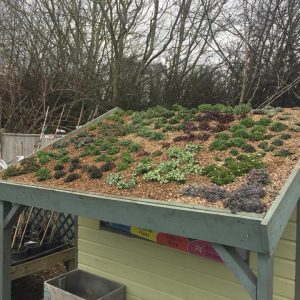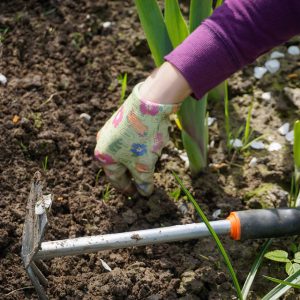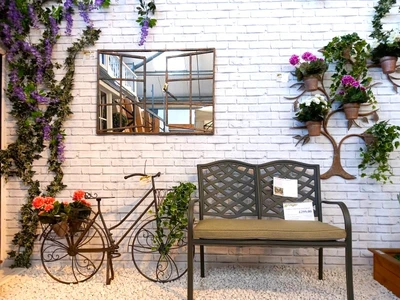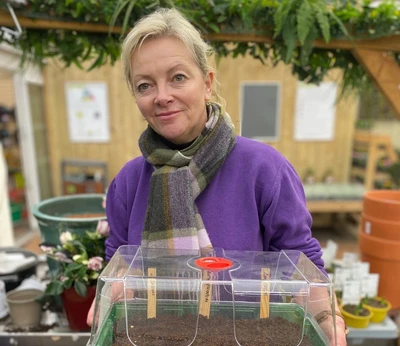
I was interested last week when Anna, our Marketing Manager, put a link on our Millbrook Facebook page to an article in Country Living Magazine about Rain Gardens – gardening to catch water and release it slowly into the water table to help prevent flooding. I remembered that a few years ago I had been given a book on this subject so I dug it out to see what they were recommending and what we might be able to do simply in our own gardens.
Interestingly, the book – Rain Gardens by Nigel Dunnett and Andy Clayden – dates from 2007 and refers to projects from the late 80s when designers were already realising that climate change was likely to lead to wetter winters and dryer summers. How right they were, we only need to look out of the window or watch the news to see the extreme weather we have been having recently. Now it seems that we are all catching up and realising the devastating effects of all this winter rain and flooding.
Increasingly we have built on and covered more areas of soil and vegetation so that rain that falls flows more quickly into our drains and does not have as much ground to soak into. Water reaches rivers faster and causes flooding further downstream. The aim of rain gardens is to slow this flow down, to help it soak into the ground or attenuate the flow. Like all of these big issues it can feel impossible for us as individuals to do anything about, so from the book and a bit of internet research I have come up with 5 things we can all do in our own gardens to make a difference.
1. Green your front garden or driveway
The RHS state that ‘Heavy rain events have shown that paving over gardens is a major factor in causing severe flooding. In 2007 alone, the associated damage was £3billion in the UK’.
If you can balance a parking space with surfaces that allow the water to pass through and some space for planting, then everyone is a winner. Keep the hard surfaces to a minimum by just paving under the wheel tracks and using gravel elsewhere that can be planted into. If the car is moved regularly you could plant low-growing plants, such as thyme or Ajuga under the parking spot. The RHS have some great advice on this here.
2. Add a green roof
This doesn’t have to be huge, just putting one on your shed can make a difference. The soil absorbs the water and the plants take some of it up and evaporate back into the atmosphere. We have put a green roof on a shed at Millbrook Gravesend and planted it with alpines. They look great, especially in the Spring when they burst into flower. Any alpines will work as they don’t need a big depth of compost but Sedums work really well. Just make sure the shed is strong enough and the roof waterproof. Even the smallest structures can have a green roof – a bird table, bike or bin store.
3. Capture the rain
The idea of the rain garden is to capture and store the water in the environment, so if you have space put in a pond, particularly a natural pond with sloping sides and planting meaning that the water level can rise and fall with the seasons. Another idea is to create a bog garden, especially if an area of your garden is already waterlogged. Again the RHS have some great advice here. It is always worth adding water butts onto your down pipes, the more and the bigger the better! Think how full they would be after this Winter and hopefully in 6 months’ time we will be grateful for that water for our thirsty plants.
4. Plant, plant, plant
Just get out there planting – well I would say that but it’s true! Every plant and especially shrubs and trees absorb water from the soil. Trees reduce flood risk from the top to bottom. Lots of raindrops that land on leaves evaporate straight into the air, so less water reaches the ground. Leaves intercept rainfall, slowing the rate that water flows into rivers and reducing the risk it’ll burst its banks. The roots of a tree are also important. They create little passages in the soil as they grow, so when it rains, water flows into those instead of flowing straight into the river. Remember there is a tree for every shape and size of garden so don’t be put off if you have a small space.
5. Stop digging
Yes, something I am new to and about to start trialling in my own garden. After the talk at Millbrook we recently held on ‘Growing for health’, my eyes were opened to the world of no-dig gardening. It seems that lots of our customers are already working this way. The idea is that by minimising digging in the garden and adding lots of mulch and compost every year, the weeds are reduced and the quality and texture of the soil improves. The worms and the organisms in the soil work their magic opening up the soil structure, benefiting plants and also improving the water retention of the soil and therefore reducing water logging. Watch this space as I experiment with this at home. Do let me know if you have any experience with this you can share!
The big learning for me is that increasingly we need to garden with nature not against it. Small changes to what we do can make a big difference.







